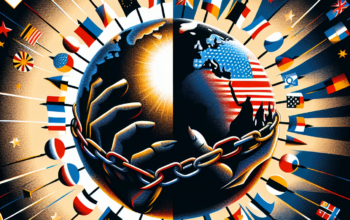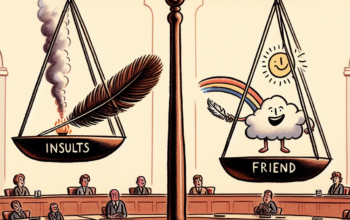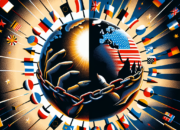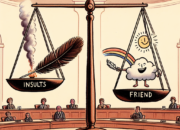Introduction
Political polarization is a pressing issue in contemporary society, particularly in 2025, as the divide between opposing political ideologies continues to deepen. This phenomenon affects governance and civic engagement, leading to challenges in policymaking and social cohesion. Understanding the nuances of political polarization is crucial for addressing its implications for governance effectively. In this article, we will explore the various dimensions of political polarization, its impact on governmental processes, the role of social media, and ways to bridge the divide in order to foster a more collaborative political landscape.
Understanding Political Polarization: Definitions and Causes
Political polarization refers to the growing ideological divide between political parties and their supporters, leading to increased partisanship and conflict. In the realm of governance, this polarization manifests as an inability to reach consensus on critical issues such as healthcare, climate change, and social justice. Factors contributing to this polarization include economic inequality, cultural shifts, and the changing media landscape. As individuals increasingly identify with their political tribes, the lines between “us” and “them” become starkly defined, resulting in a breakdown of mutual understanding and cooperation.
One of the primary causes of political polarization is the resurgence of identity politics, where individuals prioritize their group identity (race, religion, or socioeconomic status) over a unifying national identity. Additionally, the advent of the internet and social media networks has created echo chambers where like-minded individuals reinforce their own beliefs while silencing dissenting opinions. In 2025, algorithm-driven content delivery ensures that polarized viewpoints are not only more visible but also enticing to users, perpetuating the cycle of division. These factors collectively hinder effective dialogue and compromise, thereby complicating governance.
The Impact of Political Polarization on Governance
The ramifications of political polarization on governance are profound and multifaceted. One major consequence is legislative gridlock, where opposing parties fail to cooperate, leading to stalled legislation and unaddressed public needs. In 2025, various crucial policy initiatives related to education reform and infrastructure spending remain blocked in Congress due to partisan disagreements, highlighting the detrimental impact of polarization on effective governance. Policymakers struggle to cross the aisle, resulting in critical issues becoming politicized rather than treated as shared societal challenges, which can erode public trust in government institutions.
Moreover, political polarization can exacerbate voter apathy and disengagement. When citizens perceive their political environment as overly contentious, they may become disillusioned with the electoral process altogether. This disengagement disproportionately affects lower-income groups and marginalized communities, further entrenching social inequalities. In 2025, the challenges posed by political polarization raise concerns over voter turnout rates and public participation in democracy. Effective governance requires not just symmetrical representation but also active citizen engagement to ensure that public policies resonate with the collective will.
Social Media and Its Role in Political Polarization
In the digital age, social media plays a pivotal role in shaping public perception and discourse, greatly amplifying the effects of political polarization. Platforms like Twitter, Facebook, and TikTok have transformed how information is disseminated, often prioritizing sensationalism over factual accuracy. In 2025, the ramifications of social media algorithms favoring polarizing content have led individuals to encounter a narrower range of views, reinforcing existing biases. Studies have shown that exposure to diverse opinions can promote critical thinking and empathy; however, social media platforms, through their design, often emphasize confirmation bias, allowing users to curate their political realities.
The spread of misinformation and disinformation has also been exacerbated by social media. Given the rapid dissemination of false narratives tailored to specific partisan groups, the fabric of democratic discussion has been undermined. In 2025, this situation necessitates legislative responses and technological solutions aimed at combating misinformation. Social media companies are facing increased scrutiny from the public and regulatory bodies for their role in enabling polarization and are challenged to develop mechanisms for fostering healthier political discourse. Without such efforts, the threat of further polarization looms large, potentially destabilizing governance structures.
Additionally, fringe elements and extremist views flourish in an online environment that nurtures anonymity. As these ideologies gain traction, they can infiltrate mainstream political discourse, complicating governance. Parties may find themselves compelled to cater to more radical elements within their base, thereby shifting the overall political landscape further to the extremes. As discussions around policy grow more contentious and less solution-oriented, the implications for governance become increasingly serious, hindering the ability to enact meaningful change.
Strategies for Mitigating Political Polarization
Addressing political polarization requires a multifaceted approach involving various sectors of society, from government officials to civil society and educational institutions. First and foremost, promoting bipartisan initiatives that encourage collaboration between parties is crucial. In 2025, there are numerous grassroots organizations emerging with the mission of fostering dialogue across ideological divides. These organizations aim to create platforms where citizens can engage in structured discussions around contentious issues, ultimately cultivating empathy and understanding.
Education plays a vital role in addressing polarization as well. By introducing curricula that emphasize critical thinking, media literacy, and civic responsibility, schools can equip students—future voters—with the tools to navigate the complex political landscape. Programs aimed at teaching young people about differing political ideologies and the importance of respectful political discourse can bridge gaps before they widen. This educational approach aims not only to mitigate polarization but also to cultivate a more informed and engaged citizenry.
Finally, leveraging technology for good can play a significant role in mitigating political polarization. Innovative platforms that encourage deliberative democracy can provide spaces for citizens to exchange ideas and collaborate on solutions. In 2025, tools designed to promote civil discourse online are becoming increasingly important. By intentionally curating content that showcases diverse perspectives and enabling users to engage constructively, these technological solutions enhance democracy by empowering individuals to understand and challenge their own beliefs.
The Future of Governance in a Polarized World
As we look toward the future, the implications of political polarization for governance are profound. In 2025, a growing concern surrounds how institutions can maintain legitimacy and effectiveness amid increasing division. With the rapid rise of polarization, traditional governance models face challenges in adapting to a society where consensus-building is increasingly difficult. Policy efficacy is predicted to decline significantly if the current trajectory persists, impeding progress on urgent issues like healthcare and climate change.
Moreover, the future of democracy hangs in the balance as polarization engenders distrust in electoral processes. In a world where citizens feel alienated from decision-making, the potential for authoritarianism rises. Elected officials and political leaders must recognize the urgency of bridging the divide, as failure to do so poses risks not only for external relations but also for internal cohesion. The importance of governance that represents all citizens rather than catering purely to partisan agendas cannot be overstated.
Ultimately, the long-term viability of democratic governance will depend on the willingness of political leaders, civil society, and individual citizens to engage in concerted efforts aimed at healing divisions. In 2025, there are signs of hope as community-based initiatives strive to restore faith in democracy and foster collaboration. As history has shown, the ability to overcome such divisiveness is possible; however, it will require commitment, creativity, and courage from all corners of society.
Conclusion
In summary, political polarization is one of the most pressing issues facing governance today, especially in 2025. By understanding its roots, acknowledging its implications, and implementing strategies to counter its effects, we can move toward a more cohesive and functional political landscape. Effective governance relies on collaboration, mutual respect, and a shared vision for societal progress that transcends partisan divides. By addressing political polarization head-on, we can work towards a healthier democracy that serves all citizens meaningfully.
FAQs
What is political polarization?
Political polarization refers to the increasing ideological distance and social fragmentation between political parties, leading to heightened partisanship and conflict over public policy and governance.
What are the causes of political polarization?
Causes include economic inequality, identity politics, the influence of social media, and the tendency of individuals to reside in echo chambers that reinforce their existing beliefs.
How does political polarization affect governance?
Political polarization leads to legislative gridlock, decreased voter engagement, and can undermine public trust in government, making it difficult for policymakers to work collaboratively on pressing issues.
What role does social media play in political polarization?
Social media amplifies polarization by curating content that aligns with users’ existing beliefs, spreading misinformation, and fostering environments where radical ideologies can flourish.
What strategies can mitigate political polarization?
Strategies to mitigate polarization include promoting bipartisan initiatives, enhancing education on civic responsibility and media literacy, and leveraging technology to foster constructive political discourse.












